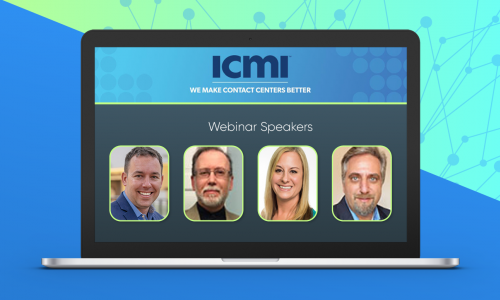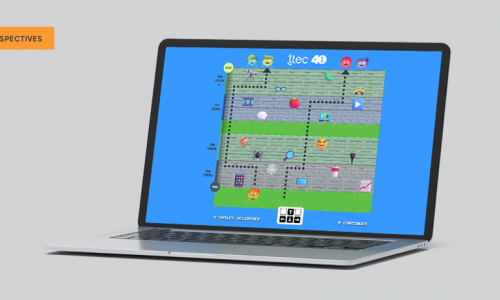As a member of TTEC Consulting, I have the privilege to work with a wide variety of organizations around the world. Over the last five years one of the consistent things that we have seen is the the challenge that many of these companies face in the implementation of their new digital strategies.
The great majority of these firms have spent a great deal of money and time developing strategies that are meant to align their service and product delivery to a new digital world with multiple channels, customer touch points, and high levels of personalization for customers and clients. For most of these firms, the new strategies are meant to be transformational and critical to fend off disruption in their industry. There is a lot of risk tied to the effective implementation of these strategies, yet many firms are stalled in making progress.
Common challenges that we see in almost every client we work with fall into three key categories:
1. Generating revenue – this may be pure growth via the acquisition of new customers but often it is revenue tied to keeping existing customers and growing an ongoing value based relationship with those clients.
2. Lowering cost to serve – this is a constant theme and is often a major driver behind any digital strategy in that digital channels are lower cost than traditional analog (voice) channels with the high cost of human interactions. This is not to say that it is all about creating self service but it is about finding the right balance between self service, proactive serve and reactive service. The rapid evolution of AI tools also create new opportunities and challenges to find the balance and value for the human interaction as well as the bot interaction.
3. Increasing customer retention – this is such a critical element to any transformation strategy as companies and their products quickly become commoditized, it is essential that you create ways for your customers to see the value not only in the product but in the relationship that they have. We see that relationships are rooted in personalization and the making sure that customers know that they matter.
One of the key areas that we often work with in our consulting are the contact centers. These may be the traditional site-based centers with thousands of associates working in a single location, virtual associates working from home, or hybrid models that combine both center and virtual associates. In these centers we find some common levers that we can work with to help our clients deliver on transformational customer experience while improving revenue, lowering costs and retaining customers.
The key levers we work with are:
1. Simplification – many of our clients have complex contact center environments with multiple routing destinations for customer contacts. These queues, cells, line of business or other name are often created to allow for short comings in technology, training, product or as a result of organizational structure. In many cases we help our clients quickly recognize 15 to 25% savings in operating expense just by consolidating these complex routing rules.
2. Call Deflection – this is the major area for most of our clients to recognize the value and investment they have made in digital solutions. Call deflection tools may be IVR, proactive messaging, web tools and mobile apps. IVR (interactive voice response systems) have been around for decades but most of our clients see very low utilization of these systems by clients and frustration due to poor user experience . Other digital solutions; proactive messaging, personalized messaging, web and mobile app self service can dramatically lower voice call volumes when they are designed around the customer. On the other hand, poor design can result in voice volume increases and increased customer frustration.
3. Call Optimization – another area of opportunity with many of our clients in improving the ability of the associates to handle the voice calls that do reach them. As we reduce the low value, transactional calls through call deflection we now have to recognize that the associates will need better training and tools to create high value interactions with customers. Doing this with the right focus on the value of the exchange can improve customer outcomes, customer experience while actually being more efficient, both in duration of the contact and the elimination of repeat calls.
Over the last two years we have worked with several clients with contact centers in excess of 5000 seats. In every case we have identified and helped the work on programs that will reduce their operating expense by more than 15% while improving customer experience. We do this by focusing on key fundamental areas of simplification, deflection and call optimization.
Client X – A large retail bank client with a very complex environment is recognizing improved NPS scores by creating a policy of greeting customers by name. I know this sounds like a small thing but since every customer for this bank has to use a PIN to authenticate this was a relatively easy process to implement and customer have responded very well.
Client Y – After many years of focusing on digital solutions this client realized that their IVR environment was creating a lot of frustration and problems for callers. This firm has hundreds of contact phone numbers and many of the IVRs have been designed and implemented without common standards. By updated these IVRs and improving the messaging, prompts and making them easier for customers to use they have been able to improve accuracy of call routing to associates. These has resulted in significant reduction in call transfers, repeat calls and average handle time.
At TTEC Consulting, we specialize in working with client firms to update and move these transformational strategies to production. We do this leveraging our deep consulting and operational background to deliver transformational initiatives that have measurable improvements and build the fundamentals that allow for rapid, agile ongoing improvements that drive revenue, lower costs, improve customer experience and improve loyalty.
Because this issue is critical to so many companies, we are launching a series, “Putting Strategy to Work.” We’ll explore how to manage specific challenges related to contact center optimization, including the simplification of complex ecosystems, call deflection and proactive customer engagement, interaction optimization, and tools to make it all happen.
Be on the lookout for future blogs and content on the topic.
Like this post? Subscribe to our customer experience blog.
Also, check out the most recent issue of our monthly customer experience eNewsletter, Dialogue.
Putting Customer Experience Strategy to Work


June 13, 2017
by Tim Keefe,
Principal, TTEC Digital
Customer Experience Strategy, Digital Transformation Consulting, Contact Center Operations
Principal, TTEC Digital
Customer Experience Strategy, Digital Transformation Consulting, Contact Center Operations





